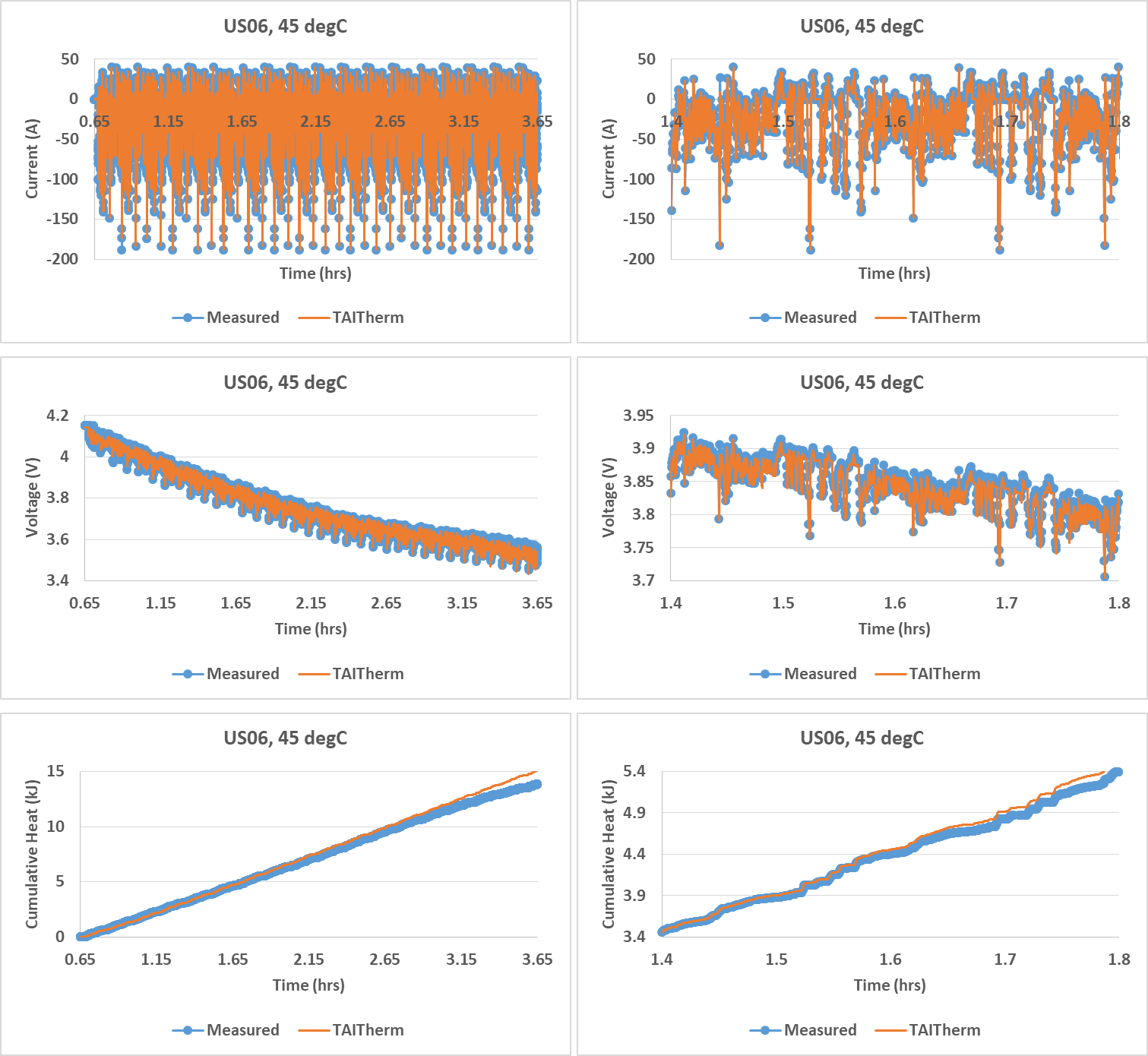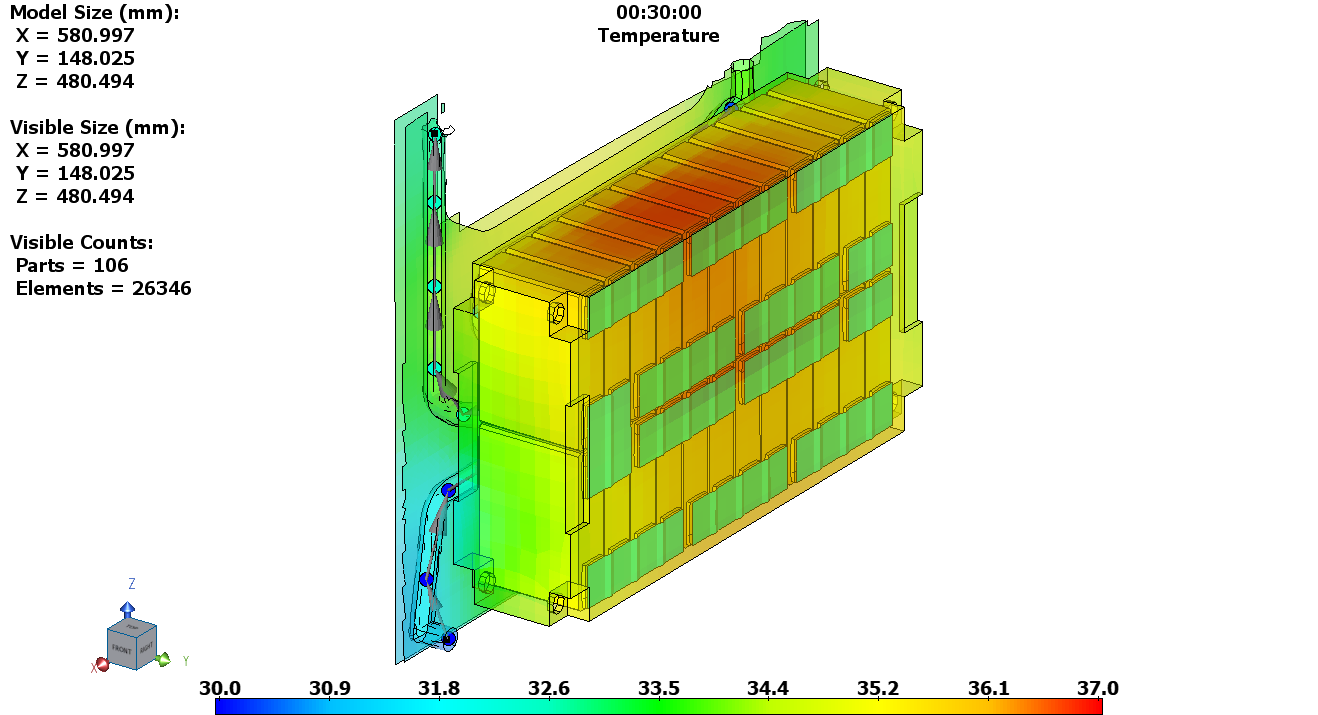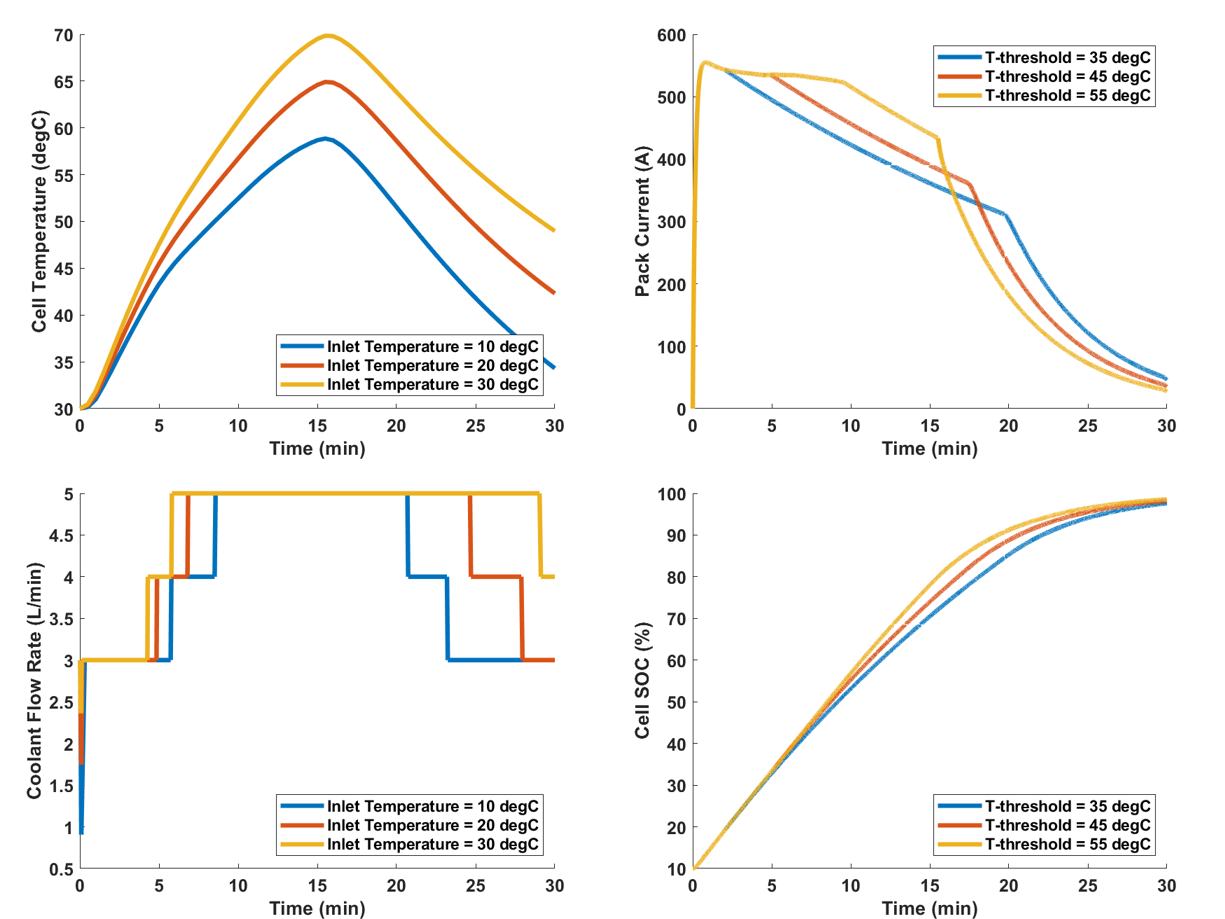Energy storage systems (ESS) applications are plentiful as OEMs electrify their vehicle fleets, residential and commercial power demand turns toward alternative energy, and portable electronics and high-tech accessories advance for everyday consumers. To keep up with these rapidly advancing technologies, many companies use modeling and simulation as a cost-effective and efficient way to design ESS. The models must be simple and accurate enough to calibrate with limited test data while providing reliable performance predictions that engineers can use to evaluate design trade-offs with minimal knowledge of the actual internal workings of the systems. Once reliable models are built, ESS thermal management systems and charger management systems can be designed to accommodate the heat produced during charging/use while keeping safety and durability in mind. This blog will highlight how simple battery models can be calibrated and validated and then used to inform the design of battery chargers and thermal management systems.
TAIThermTM and CoThermTM can be used as stand-alone simulation tools or with system model tools to design better battery thermal management and charger management systems. State-of-the-art tools have been developed by ThermoAnalytics, Inc. (TAI) to evaluate battery temperature and electrical profiles during rapid charging. Simulation improves the pre-development process by allowing engineers to quickly evaluate design alternatives with fewer prototype parts and tests, which can produce higher-quality products and meet design objectives such as temperature limitations, time to charge/discharge, packaging, quality, and reliability. TAIThermTM provides a fast, accurate, easy-to-use total thermal solution, bridging the gap between 1-D electrical and detailed 3-D thermal/CFD models.
The battery models discussed in this blog are based on a 2 RC-pair (second order) equivalent circuit model that is empirically fit to experimental data. Using 2 RC pairs allows the model to capture transient voltage and heat rate responses using look-up tables (LUT) for the model parameters. These LUTs can be functions of temperature, state-of-charge, C-rate, and whether the battery is being charged or discharged. The cooling circuit control strategies considered here also use LUT as functions of battery temperature and battery state of charge. Diagrams of the cooling circuit control LUT are shown here.

For this study, battery equivalent circuit parameters were derived using the CoThermTM battery parameter generator and the hybrid pulse power characterization (HPPC) test data as input. The parameter generator can also take any arbitrary drive cycle as input. TAI customers have shown it to be accurate compared to other parameter estimation techniques with limited data. A validation of the voltage and heat rate predictions produced by this method is shown here.

As a case study, we examined one battery module with 24 prismatic cells, which was cooled using a cold plate with fluid streams in a serpentine pattern. The fluid streams used library convection and were connected to the battery module casing using thermal links. An example temperature profile from the simulation is shown below.

Using the charger and coolant control strategies implemented by TAI, the effects of coolant inlet temperature, flow rate, and battery limit set point on current de-rating and internal cell temperatures can be seen in a parametric study presented in the following images. As with any cold plate thermal management system, there is a point of diminishing return on increasing the flow rate to cool the batteries, as the thermal resistance between the cold plate and batteries limits the effectiveness of the design. Due to de-rating, the current from the fast-charge process is reduced to maintain reasonable battery temperatures and extend service life. Regulating coolant flow also makes the thermal management system more efficient.

Finally, 3D battery thermal/electric models such as the one shown here can be duplicated and integrated into a battery pack in a full vehicle and used with other TAIThermTM features such as solar loading, RapidFlow, human thermal comfort prediction, and energy consumption/range prediction to evaluate entire vehicle designs in the thermal/electrical/fluid flow domains. Tune into our upcoming webinars to see how TAIThermTM and CoThermTM can be used to evaluate how much energy is used by different electrical components of EVs and how fast charging affects the health of battery packs, including thermal and C-rate-dependent effects.

Visit our website at suppport.thermoanalytics.com for
- FAQs
- Webinars
- Tutorials
Get help from our technical support team:

